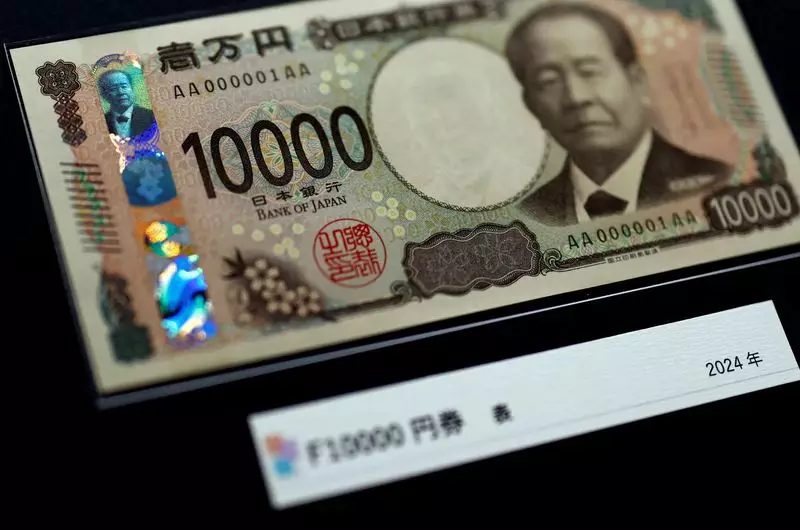The foreign exchange market is currently witnessing notable shifts, influenced primarily by U.S. inflation data and the evolving monetary policy landscape in Japan. On Thursday, the U.S. dollar lost some momentum, standing just off its recent peak levels. This retreat can largely be attributed to a decrease in U.S. bond yields following the release of cooling inflation figures. Simultaneously, the Japanese yen surged by about 1%, reflecting growing optimism regarding the possibility of a rate hike from the Bank of Japan. As a culmination of these factors, the yen achieved its strongest valuation against the dollar since December 19, trading at 155.21 yen per dollar.
The dollar’s withdrawal from recent highs is not just limited to the Japanese yen; it also displayed weakness against other currencies, including the Australian and New Zealand dollars. The Aussie dollar reached a one-week high of $0.6248 amid these trends. Conversely, the euro remained relatively stable, trading at around $1.0298, even as the dollar index dipped to approximately 109.02. This represents a decline for the fourth consecutive session, demonstrating the volatility and reactive nature of the currency markets amid shifting economic conditions.
The recent U.S. inflation report for December revealed a core inflation rate of 0.2%, which aligned with market expectations but fell short of November’s 0.3%. On an annualized basis, inflation registered at 3.2%, slightly edging down from forecasts of 3.3%. Such data is critical as it gives traders and investors a clearer insight into potential interest rate changes by the Federal Reserve. With inflation appearing to cool, traders exhibited relief, subsequently pushing stock markets upward and driving down the benchmark 10-year Treasury yields by more than 13 basis points. This downward trend in yields often correlates with a weakened dollar in foreign exchange markets.
Despite the softening of inflation, the dollar index remains about 0.5% higher in January, which indicates a trend of resilience. This persistence in dollar strength is underscored by expectations of future Federal Reserve easing. Market participants currently anticipate roughly 37 basis points in rate cuts throughout the year, a sentiment that suggests cautious optimism regarding U.S. economic conditions.
Geopolitical Factors and Currency Volatility
The upcoming inauguration of Donald Trump highlights a potential source of volatility in the currency markets. Traders are preparing for possible executive orders that could significantly influence tariffs and overall asset pricing. Economist Vishnu Varathan from Mizuho has noted that apprehension around “Trump 2.0” and tariff-related risks may contribute to the recent strength of the dollar. Moreover, the Chinese yuan remains under pressure, trading near the weak end of its trading band amid fears surrounding potential trade barriers.
While the Australian and New Zealand dollars saw momentary boosts, the New Zealand dollar remains near a two-year low, reflecting persistent concerns over global trade dynamics and economic growth. The British pound, meanwhile, saw a slight dip to $1.2233, echoing the ongoing themes of currency market trepidation.
As currency traders navigate this complex environment, they await additional critical economic indicators. On Friday, China will release essential growth figures, which are poised to impact sentiment in the broader Asian markets. Traders are also looking ahead to the Bank of Japan’s upcoming meeting next week, where discussions surrounding a possible rate hike have captured market attention. Notable comments from BOJ Governor Kazuo Ueda and Deputy Governor Ryozo Himino have spurred optimism, with market pricing indicating a 74% chance of a 25 basis point rise in short-term rates.
The currency markets are caught in a web of influences stemming from domestic inflation data, shifting monetary policies, and potential geopolitical changes. As traders and investors assess the implications of these trends, the landscape remains fluid, with the possibility of further fluctuations in the weeks to come. Observers will be keenly monitoring how these dynamics unfold and their potential impact on global currency valuations.

